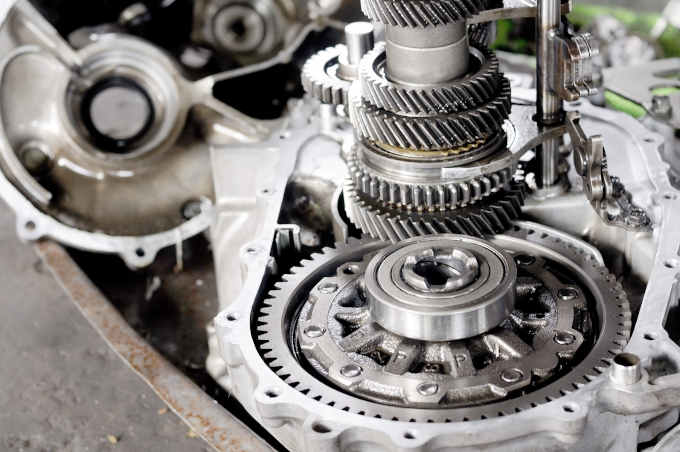Nearly every modern vehicle on the road today has a complex and fine-tuned piece of machinery known as the transmission housed within it. While you may have heard of a transmission, learning how one functions and understanding the essential parts that keep one operating can help you care for your vehicle more effectively.
While most automobiles manufactured today feature an automatic transmission, some still offer manual transmission systems to allow for driver preference and control. Regardless of the type of transmission your vehicle is equipped with, problems can still arise that must be dealt with appropriately.
Note: due to the vast majority of cars on the road today utilizing an automatic transmission system, this article will lean heavily on the components included in that style.
The Main Components of an Automatic Transmission
A vehicle’s transmission system is a unique and complex piece of equipment controlled by various parts. Let’s break down each to help you gain a better understanding of what each contributes to the system and how to tell when parts are malfunctioning or failing.
Planetary Gear Sets
The real engineered magic behind an automatic transmission system comes with the design of the planetary gear sets. With an automatic transmission, gear ratios that control the engine’s power increase and decrease independently by taking advantage of the planetary gear set.
The planetary gear set consists of three components: the center sun gear, three or four smaller planet gears, and the outer ring gear. In short, these three gear sets rotate at varying speeds, interacting with one another to provide more or less torque to the transmission system. Should these intricate gear sets begin to wear down or fail, you will lose torque to your transmission and quickly lose power.
Hydraulic System
The planetary gear sets are controlled by bands that decide how much or how little torque is needed, as indicated by your speed. The bands are governed by the transmission’s hydraulic system, which regulates how much transmission fluid is allowed through the system to control the bands. Without a properly-operating hydraulic system — due to low fluid, old fluid, or leaks — your vehicle will be unable to control the bands that operate the planetary gear set.
Seals and Gaskets
Seals and gaskets exist throughout the transmission to ensure the proper flow of fluid in the system. Common transmission problems can often be traced back to broken or worn-down seals and gaskets that can lead to leaks and a loss of transmission fluid.
Torque Converter
A donut-shaped piece of equipment within the transmission system, the torque converter allows the vehicle to convert power when the vehicle comes to a stop and acts as a clutch to keep the vehicle in power and running in drive. If the torque converter is broken down or wearing out, you will notice bumpy or rocky idles and lose power completely when coming to a stop.
Oil Pump & Valve Body
Transmission fluid is moved throughout the transmission properly with the aid of the transmission oil pump and the valve body. Together, these pieces of equipment regulate the amount of hydraulic fluid brought into the transmission and regulate the engine’s pressure to keep your vehicle moving.
Should these essential parts break down, you may experience a loss of power, potential slipping of gears, and possible transmission fluid leaks.
Governor and Modulator/Throttle Cable
To ensure that the proper hydraulic pressure is achieved within the transmission as you speed up, slow down, or idle, the governor or modulator monitors levels and regulates pressure as needed to keep the vehicle in motion.
Modern vehicles use updated valve body solenoids that help regulate power and provide hydraulic pressure changes as necessary.
Computer System
In modern vehicles, a powerful computer system is built into the vehicle that monitors various levels and inputs/outputs. This includes the power and emissions being given off through the transmission system. Should something unusual occur that causes the transmission to malfunction, the computer system will catch the signal and alert the driver to a potential issue. In many cases, the computer system can try and reroute power to avoid failure.
The Consequences Of Ignoring Transmission Problems
With so many elements involved in a working transmission system, a small error in one part can lead to a failure of the entire system. Should your transmission begin to fail, you could face expensive repairs and find yourself without a functioning vehicle. Should a catastrophic failure occur while driving, you may find yourself stranded on the side of the road or in an accident.
To avoid potential transmission problems, the best offense is a strong defense. Always follow your vehicle’s manufacturer recommended maintenance schedule and keep the proper levels of transmission fluid in the vehicle at all times. At the first sign of a problem, make sure you visit your trusted and trained mechanic to have them take a look at the entire vehicle.
Treat Your Transmission With Respect
Transmission systems are a fascinating and powerful piece of human engineering and deserve your respect when operated. These power systems are built to last, and if you take the steps necessary to keep your transmission system healthy, the reward will be years of excellent driving performance.
We're Here to Help
AAMCO has more than 60 years of experience diagnosing, servicing, and repairing more than 20 million vehicles. Customers rely on us for:
- Quality workmanship
- Expert Technicians
- Superior service
- Best warranty coverage available
- Trustworthy, honest service
AAMCO Centers of Southern California and surrounding areas represent trust, quality, and value. Call us today!

 Schedule Appointment
Schedule Appointment















